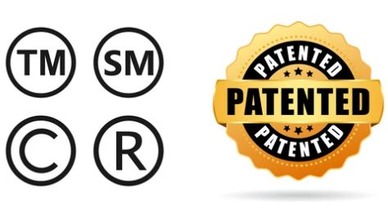Patent and Trade Secret: Never Ending Conundrum
Patents and trade secrets go hand in hand where protection from both has its features with its pros and cons. The same needs to be dealt with in a way in which they are best suited. Patents are there for 20 years where after the expiry they end up being in the public domain. Whereas, trade secrets are those which last indefinitely unless otherwise stated. The protection by the trade secrets is generally for those who are not in the domain of other IPs. The confidential information which is generally not protectable tends to get protection as a trade secret which is specially drafted through a contract in companies. There is no need for disclosing any information which for trade secret is not necessary. One may not disclose any information while claiming trade secrets. While dealing with the patent the effective disclosure must be provided for initiating the process of the grant of the patent. Those details must be sufficient for a person who is skilled in the relevant technology to make use of the invention.
Seventh Circuit ruling in a recent case
In the latest case of Life Spine Inc vs. Aegis Spine Inc., the issue concerns protecting the intellectual property in an innovative product as a trade secret or patent protection but this protection might not be invariably exclusive. A preliminary injunction was granted against Aegis in an action which was bought by Life Spine for trade secret misappropriation where it was alleged concerning the breach of the agreement. The argument was that if a company effectively discloses its invention through patents, it is cannot have a trade secret. The court denied the same.
[Image Source: gettyimage]
The product in question is the Life Spine ProLift, which consists of an expandable implant, or “cage,” and an installer that is used to insert the cage into a patient’s spine and expand it to restore spinal disc height. The trade secret which was misappropriated is“the precise dimensions and measurements of the ProLift components and sub-components and their interconnectivity”. The major question was about obtaining the precise specification without signing the confidentiality agreements, which was negated by the district court stating that third parties could learn this information only through unfettered access to the device and specialized measuring equipment and that Life Spine does not allow third-parties such access unless they first sign confidentiality agreements. Whereas, the agreement signed by Aegis was only a distributor agreement that acted only as a distributor part of ProLift and it was not destined to use the information. Aegis used the same and developed a nearly identical product through its parent company L&K Biomed Inc.
While on appeal, Aegis contended that the information about ProLift cannot be protected through trade secret since the Life Spine patented, displayed, and sold the device to hospitals and surgeons. The court observed that “Aegis appears to view trade secret protection as an all-or-nothing proposition for a given product—either it exists, or it does not.” The court then noted the inquiry is not so simple and instead is focused on “the precise information that the plaintiff seeks to protect.” The court framed the question: “Did Life Spine publicly disclose its alleged trade secrets by patenting, displaying, and selling the ProLift?”
The efforts by Life Spine to protect its trade secret were at great length and maintained a fiduciary chain of custody of each device from shipment through completion of surgery. The decision in the Life Spine was a good one where the information not included in the disclosure may qualify for trade secret protection.
Author: Saransh Chaturvedi an associate at IP And Legal Filings, in case of any queries please contact/write back us at support@ipandlegalfilings.com.




